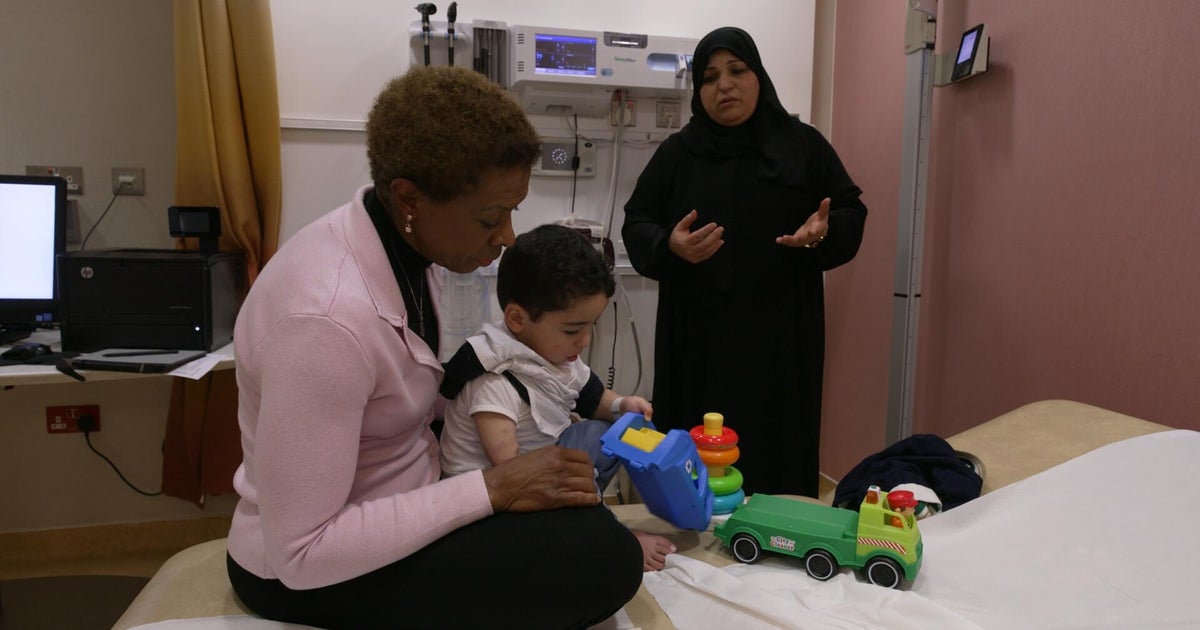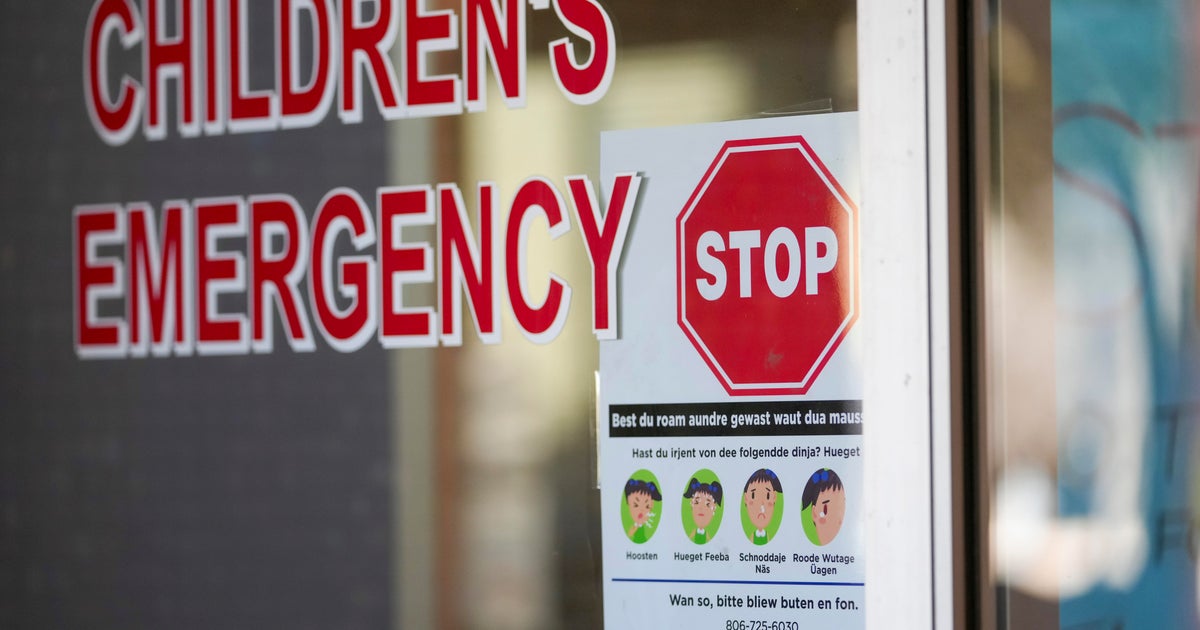Two-year-old Sanad lost an arm when his Gaza neighborhood was bombed one year ago during the ongoing Israel-Hamas war.
His face and tongue were torn apart, and several of his family members died. Sanad’s parents are still in Gaza. He and his grandmother, Marwa Al-Arabi, are in Qatar, where the young boy is being treated from his traumatic injuries. Al-Arabi didn’t think her grandson would survive.
“I thought he was taking his last breath,” she said.
After nearly 18 months of war — sparked by the Oct. 7 Hamas terrorist attack on Israel — more than 34,000 of Gaza’s children have reportedly been injured, according to the Hamas-run Gaza Health Ministry. Most are still in Gaza, where medical equipment is in short supply, while others, like Sanad, were medevaced for treatment.
Israel has permitted about 7,000 injured people through its blockade. Guardians accompanied some of the wounded children. More than 300 children were medevaced by the Gulf state of Qatar — an act that saw patients escape the poorest place on Earth for one of the richest. Qatar’s $8 billion Sidra Medicine opened a ward for the Gaza children.
Some of the patients were in life or death situations, said Dr. Mansour Ali, the hospital’s head of surgery. They would have died from complications, wound infections or septic shock if they had stayed in Gaza.
60 Minutes met with a number of Gaza’s children recovering in Qatar. Almost all of them said they lost their homes. About 92% of Gaza’s housing has been damaged or destroyed, the U.N. says.
Many of the children also said they’d lost a parent. An estimated 50,000 Palestinians have been killed in Gaza since the start of the war, according to the Hamas-run Gaza Health Ministry.
One of the wounded children recovering in Qatar suffered a traumatic head injury, which was repaired with a plate in her skull. She was hurt when her grandfather’s house was bombed.
“I was about to leave the house when a piece of shrapnel hit my head,” she said through a translator. “Two of my brothers were killed along with my grandfather and grandmother.”
Another girl, 15-year-old Lama, said she was unconscious in a Gaza hospital for a week after she was injured.
“I learned that my leg was amputated. It was a month before I learned that my sister and brother had been killed,” she said through a translator.
Many of the children are patients of Dr. Lisa Thornton, chief of pediatric rehabilitation at Sidra. She coordinates therapies and prosthetics.
“Our goal is to get them back to childhood,” she said. “And really, you know, the primary occupation of childhood is play. So, we want to be able to get these kids back to being able to play.”
Children are resilient, so even those who’ve suffered multiple amputations can learn how to play again if they’re not in pain,” Dr. Thornton said.
Thornton described one boy, now 10, who had to have both his arms amputated at his shoulders.
“And within a few weeks, he was using his feet,” she said.
He’s learning to feed himself with his feet and hold a pen with his toes. The wounded boy, with a smile on his face, also uses his feet to steer a scooter.
While very few children are being treated outside Gaza, thousands who need that level of care are stuck in the enclave, according to Dr. Samer Attar, a 49-year-old Chicago orthopedic surgeon who’s volunteered in Gaza five times.
Thirty three of the 36 total hospitals in Gaza have been damaged during the conflict, according to the World Health Organization. The hospitals have been overwhelmed, Attar said.
“Imagine 50 people showing up all at once, and 15 of them are dead on arrival. And they’re all trying to get into the emergency room, and there’s no place to step. And there’s not enough beds, so you’re working and resuscitating and operating on patients on floors smeared with dirt and blood,” Attar said. “And you’d see just little kids shredded and twisted, their insides falling out — dismembered, missing arms and legs. I remember one little girl just pounding her fists on the floor, just refusing to believe that her mom was dead, but they had to just forcefully pull her away to make room for incoming wounded because the pace of the wounded just doesn’t stop. They keep coming.”
The hospitals aren’t sterile and anesthesia is a luxury, Attar said. There’s also a shortage of blood. Attar said he remembers two young brothers who could have been saved if there had been enough blood.
“That kid just, we just sat back and helplessly watched him die on the operating room table,” Attar said about one of the boys. “And his brother was the same story. He could’ve been saved, but we didn’t have blood. And he died the next day.”
Many of the patients were not wounded, but starving, Attar said. The U.N. says Gaza is at risk of famine. Attar remembered one boy, Karem, who suffered from significant malnutrition and was in the intensive care unit.
“His mom asked me to come meet him. And I started talking to her and then the nurses told me that Karem had been dead for over an hour, mom just refused to let the nurses take away his body,” Attar said. “She kept showing me videos of what he used to look like, and how he was so playful, and how he was so kind. And she just couldn’t believe that because they didn’t have enough food and water, he didn’t make it.”
Working to treat the patients can also be a dangerous experience. Gaza medical facilities and ambulances have been attacked 670 times, according to the U.N.
“The bombs land so close you feel the hospital shaking,” Attar, who has also treated the wounded in Syria and Ukraine, said. “At times the fighting and conflict is so intense you feel like the hospital is gonna collapse on top of you. And there have been instances of hospitals that were attacked, that were invaded. So, there’s really no safe space.”
The Israeli military says Hamas uses hospitals for shelter and arsenals.
Israeli Prime Minister Benjamin Nethanyahu has said that his country ensures “humanitarian assistance reaches those in need,” but no food or supplies were permitted into Gaza last month. Israel has vowed to keep up the fighting until Hamas returns the remaining hostages, disarms and leaves Gaza.
Protesters in Gaza have recently called for the end of the Hamas regime. So far, there’s no end to the suffering in sight.
“I can’t stop bombs. I can’t rescue hostages. I can’t solve this crisis. I can’t repair the world,” Attar said. “But I can stand next to you. I can live amongst you. I can share your grief. I can feel your fear. I can serve your community. I can bear witness to your suffering. And then just make some noise about it. And it’s not much, but it beats burying your head in hatred and violence and ignorance.”
In Qatar, Thornton said the kids she’s treating give her hope.
“They’re playful, and they’re energetic, and they’re surviving, and they’re thriving. In this unthinkable trauma, they’re thriving,” she said. “And it really does give me hope. I believe that the human spirit is incredible, and the spirit of children is more than any of us have as adults.”




